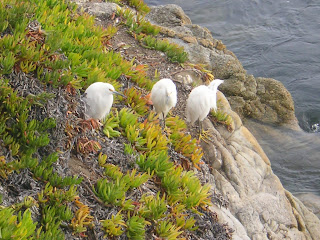December 25, 2013
We went up to San Francisco on Christmas again. Get this, it didn't rain like 2012 and 2010. It was gorgeous. Of course, with beautiful, sunny weather, the people come out in droves, but I didn't mind too much. The great thing we've discovered about rain is that it keeps many people indoors, which makes San Francisco feel like a totally different city. This excursion may become a tradition for us - scenic drive up Hwy 1, House of Bagels, Botanical Garden, finding Le Soleil closed yet again and asking for recommendations from Clement St. locals, visiting with friends, and marveling at the Union Square hubbub. It was a very good day.











































